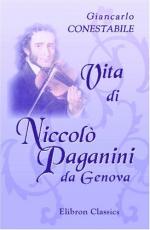|
This section contains 518 words (approx. 2 pages at 300 words per page) |

|
Unlike painting, architecture, literature, and music, sculpture did not change greatly in form or meaning between the late eighteenth and the early twentieth centuries. And with the exception of Auguste Rodin (1840-1917) late in the nineteenth century, few great artists are associated with sculpture during this period. In the age of Classicism, Antonio Canova (1757- 1822) and Bertel Thorvaldsen (1740-1814) were the leading sculptors and became highly influential on young artists. Canova, in good Classical fashion, chose heroic subjects and in that way personified universal values of ...the Enlightenment. As Napoleon's court sculptor, he carved portraits of his powerful contemporaries, but he invariably presented them in ancient attire and cut his statues from marble, closely imitating ancient Roman technique and making no concessions to the emerging style of Romanticism. Thorvaldsen was equally Classical in his desire to instill his sculptures with, universal...
|
This section contains 518 words (approx. 2 pages at 300 words per page) |

|




